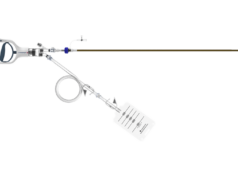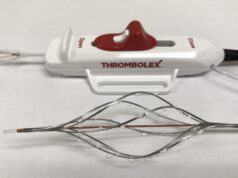
At VEITHsymposium Vascular News spoke to Tom O’Donnell who has carried out a review for the all trials relating to diabetic feet and venous ulcers. for theTufts-New England Medical Center Evidence-based Practice Center (EPC).The Tufts-New England Medical Center Evidence-based Practice Center (EPC)produces evidence reports based on systematic reviews on behalf of federal agencies such as CMS (Medicare).. The analyses critically appraise, synthesize and summarize the results of all studies that have addressed a particular clinical research question.
Dr O’ Donnell commented that there was a real need for such an updated systematic review. A previous review by the NHS HTA addressed all randomized controlled trials from 1980 to 1997. The trials were predominantly for venous ulcers (31), while only 3 trials examined treatment of arterial ulcers.. The majority of these trials were marred by methodological failings such as absence of documentation of the original wound size and the reasons for withdrawal of patients were not provided.
Dr O’ Donnell and his colleagues from EPC reviewed the literature for diabetic foot and venous ulcers authored since 1997 and identifed 44 randomized controlled trials for diabetic ulcers and 63 randomized controlled trials for venous ulcers. Although CMS was interested in other aspects of the review, for the Veith presentation, Dr. O’Donnell focused on the effect of various types of wound dressings on outcome resultsfor wound healing. Outcomes were based on hard endpoints such as the proportion of wounds with complete healing, time to healingas well as ulcer recurrence.
In an attempt to limit the variables, the 44 RCT studies of diabetic foot ulcer were winnowed down to 17 studies which employed both elements of current care and valid endpoints. Artificial skin appeared to have the best trends for ulcer healing, some promise was noted in the biologic dressings (growth factors), but results with semi-occlusive/occlusive (hydrocolloid etc) dressings were disappointing. Only 4 of 10 trials addressed recurrence and no difference was observed between the experimental and control arm. Key management principles were frequent to debridement of the wound, offloading and appropriate treatment of infection.
After the 63 RCT trials for venous ulcer had ulcers of a mixed etiology or studies which addressed comparisons of several types of elastic compression eliminated, 29 studies were available for further analysis. Thirteen of these studies had valid endpoints. Only a small number of studies had statistically significant improved healing over the control arm i.e. the effect of the specific wound dressing was minimal, particularly when compared to the 60 to 70% healing rate described from employing a four layer bandage alone.
Finally, Dr. O’Donnell commented on the ESCHAR Study results presented at the annual Vascular Society of Great Britain & Ireland meeting held in Harrogate last November. The trial showed that superficial venous surgery with compression reduces venous ulcer recurrence versus patients treated with compression alone.












